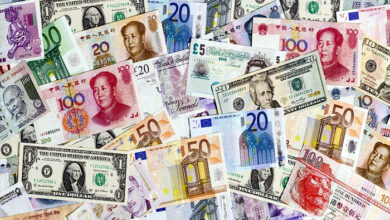Rouble falls to its lowest level in seven months and has its biggest one-day drop since July.

On Monday, the rouble fell to its lowest point against the dollar in more than seven months. It was also on track for its biggest one-day drop since July, due to fears that sanctions on Russian oil will hurt the country’s export income.
The drop on Monday happened while Russian President Vladimir Putin was in Belarus. This made people in Kiev worry that he would try to get his former Soviet ally to join a new ground offensive against Ukraine.
At 15:15 GMT, the rouble was 4.3% weaker against the dollar, trading at 67.41 instead of 68.4800, which was its weakest level since May 11.
Related: The Russian rouble falls to its lowest level against the euro in more than six months.
The value of the currency fell 3.8% against the euro, to 71.71, which is also a more than seven-month low. It fell against the yuan by 3.9% to 9.64, which was the lowest level since early July.
In December, the rouble lost almost 10% of its value. Yulia Melnikova, an analyst at Alfa Capital, said that the weakening is due to worries that an oil embargo and price cap will cut Russia’s oil export income, which will increase the budget deficit as imports slowly recover.
“The talk about sanctions is also bad for the currency of the country,” Melnikova said.
Last week, the leaders of the European Union agreed to a ninth set of sanctions against Moscow. This included putting nearly 200 more people on a blacklist and making it illegal to invest in Russia’s mining industry, among other things.
The rouble is still the best-performing currency in the world this year. This is due to capital controls and an initial drop in imports caused by sanctions from the West over Russia’s actions in Ukraine, as well as the fact that many foreign companies have stopped doing business in the country.
TAX ASSISTANCE
Analysts think that the rouble will get a boost from the upcoming month-end tax payments when exporters convert foreign currency earnings into roubles to pay local bills. However, since the rouble has crossed the 65 mark for the first time since May, it could settle into a new, weaker range.
The head of investments at Locko Invest, Dmitry Polevoy, said, “Our view of oil, upcoming taxes, and dividends lets us keep our forecast for a small rise in the near future.”
Brent crude oil, which is the world’s standard for Russia’s main export, was up 1.8% to $80.5 a barrel, but it has been trading at its lowest level all year this month.
SberCIB Investment Research said in a note that the rouble could move into the 67–70 range soon if it stays above 65. This could happen if exporters don’t do anything despite upcoming tax and dividend payments.
The rouble barely moved when Russia’s central bank kept its key interest rate at 7.5% on Friday. The bank did change its tone slightly to acknowledge rising inflation risks, saying that the recent mobilisation of the military was making labour shortages worse.
Related: The cargo ship on its way to the space station had trouble with its solar panels.
Even stocks in Russia were going down.
The dollar-based RTS index (.IRTS) fell by 4% to 996.9 points, which was the lowest level in more than two months. At 2,132.2 points, the MOEX Russian index (.IMOEX), which is based on the rouble, was flat.





